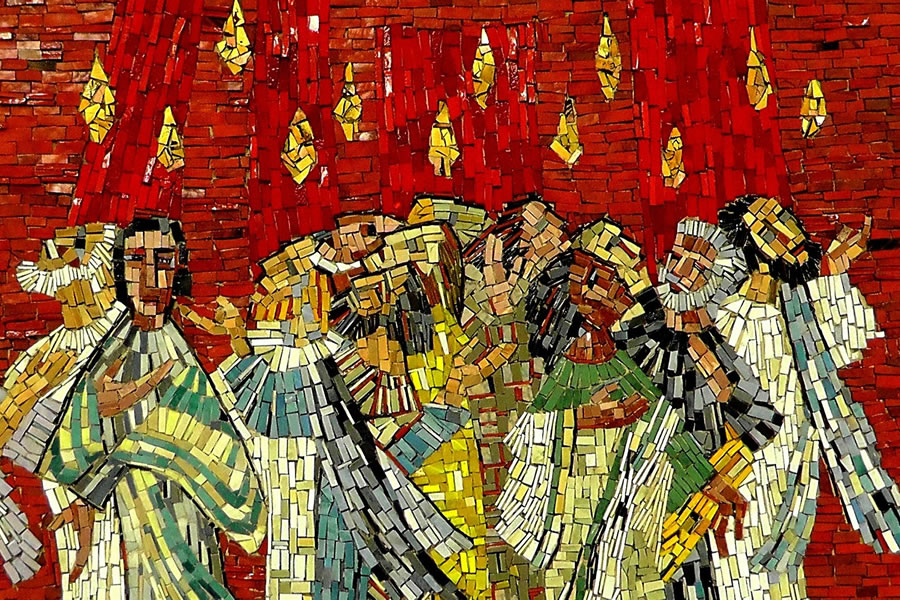Blog & Pastor Letters

Pentecost Sunday – May 19, 2024
05-19-2024Weekly ReflectionFr. Stephen YuskoThe Church is very wise in the planning of the liturgical calendar. It seems like we are always in preparation for the next big thing in the cycle. As you will no doubt recall, the liturgical year begins with the season of Advent, a time of preparation for the coming of Christ. However, even in Advent, this holy time can be viewed as a kind of two-part season. Beginning with about the first three weeks, the focus is on the figure of Saint John the Baptist, the forerunner of the Lord Jesus, and the coming of Christ in glory at the end of time. Following this remote preparation for the Lord, from December 17 onward, we kick into high gear with the proximate preparation for the recalling of the events of the Incarnation and Birth of the Messiah, marked with the use of the “O” antiphons in the Liturgy of the Hours.
The Christmas season, although among the shortest liturgical seasons, takes us in about two weeks from the infant Christ to the Christ beginning his earthly ministry following his Baptism. We then go for a short period of time into the season of Ordinary Time, this post-Epiphany season, in which we are fully immersed in the ministry of Christ. The great and holy season of Lent, the time of penance and preparation before the yearly commemoration of the Easter mysteries can be seen as logically flowing from this time of Christ’s earthly ministry and can even be seen to be in two parts, in a similar way to Advent. The time of remote preparation for Easter can be seen from Ash Wednesday and the first three and a half weeks of Lent (in which the Lord Jesus gives us all those rich parables on prayer, fasting, almsgiving, and forgiveness) all the way to around the end of the fourth week of Lent, at which time we begin to engage in our Gospel with the confrontations which led Our Lord to undergo his Passion, Death, and Resurrection.
Following the time of the Sacred Triduum (which, truth be told, is its own liturgical season, clearly differentiated from Lent), we have the Easter season, which is, outside of Ordinary Time, the longest of the seasons. However, we can view even this Easter season, one in which we bathe in the light of His Risen Glory, Christ Our Lord, as a season of preparation. We can view all of the liturgical season of Easter as a remote and proximate preparation for the coming of the Holy Spirit in Pentecost. (And, if I may be candid, I find it a real shame that we do not have a season of Pentecost in the liturgical calendar; imagine how nice it would be to have around two weeks of red vestments at the start of Ordinary Time.
This past week we begin the proximate preparations for the coming of the Holy Spirit in Pentecost. It is said that, in many ways, the Holy Spirit is the forgotten Person of the Most Blessed Trinity. Perhaps this is because, in many ways, He is the most intangible. We can envision the Second Person of the Most Blessed Trinity, in his Sacred Humanity, due to the Incarnation. We can even kind of envision God the Father, the First Person of the Most Blessed Trinity (or at least an anthropomorphized view of Him)! However, that Third Person of the Trinity, well, that’s the hard one to really grasp!
Make no mistake, though — the Holy Spirit is God. He is the Lord, the giver of life, as we profess each Sunday and solemnity in the Nicene Creed. But how do we experience the Holy Spirit? The sure and certain guide that is the Catechism of the Catholic Church can serve as a guide for us.
BACK TO LIST